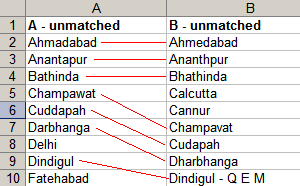How I listen to music
I have a large MP3 collection (Tamil and Hindi films). I don’t like selecting songs to listen to. Too much effort.
I rated all songs I had listened to (650 songs x 5-10 seconds = 1-2 hrs) and created 7 SmartViews. I just go to one of these and play them in order. Here are my views, in descending order of their use.
- Most played. Sorted by Play Count. Songs I play the most. Plays stuff I listen to usually.
- Not heard recently. Played Last before 3 months ago AND Rating >= 3. Plays good songs I haven’t heard recently.
- Not played much or recently. Played Last before 1 month ago AND Play Count <= 2 AND Rating >= 3. Plays good songs I haven’t heard often enough.
- Recent hits. Last updated after 3 months ago AND Play count >= 3. Plays songs recently added and liked.
- Recently played. Sorted by Last Updated. Often, I like to listen to songs I listened to yesterday.
- Top rated. Sorted by Rating. My best songs. (Suprisingly, I don’t use this view much.)
- Recently added. Sorted by Played Last. Plays songs I just downloaded.
But WinAmp’s not good enough. For example, I can’t find out what songs I played at least thrice last month. How do I see what I’ve been listening to a lot recently? Fortunately, there are a few WinAmp history plugins. I installed Pepper, which produces a log file that can be analysed. I did this two weeks ago, and don’t have enough data. When I do, I’ll modify two views
- Not heard much or recently. I’ll change this to “Not heard much recently” – Rating >= 3, Play Count > 5, Play Count = 0 last month.
- Recent hits. Modify it to show songs played at least thrice last month.


